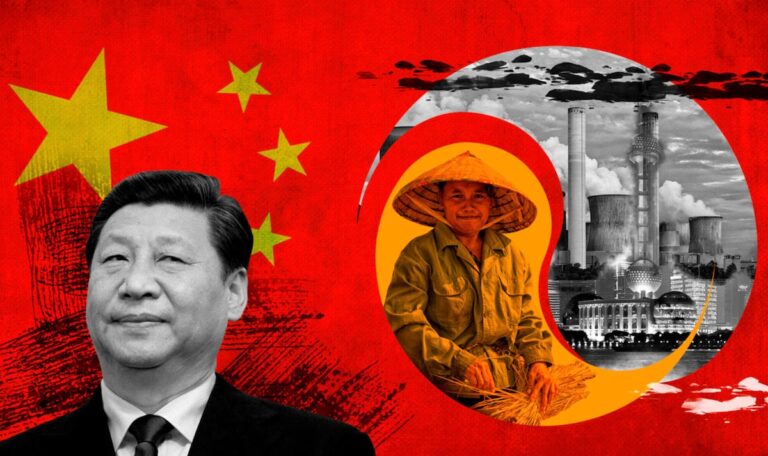Contrary to a popular meme among Western policy analysts, there is no Chinese “export surge.” While China’s exports to developed markets have been stagnant for years, exports to the Global South have doubled.

Not only has China’s total exports to the Global South increased by an unprecedented amount, but exports to all regions of the Global South have also increased in tandem, including Asia, Latin America, Africa, the Middle East/North Africa, and Central Asia. did.

Part of China’s export success in the developing world is certainly due to new tariffs motivated by the Trump administration’s 25% tariffs on about $200 billion worth of Chinese imports in 2019. It reflects the type of triangular trade. China ships parts and capital goods to Mexico. , Vietnam, India, and other countries to assemble them into finished products and sell them in the United States.
Asia Times first documented this wholesale evasion of US tariffs in an April 3, 2023 analysis. Since then, the World Bank, International Monetary Fund, Bank for International Settlements, and Peterson Institute have published studies documenting the same conclusion. This means the US is more dependent than ever on China’s supply chain.

China’s exports to the Global South (left scale) are tracked by U.S. imports from the Global South (right scale), with a lag of about two months. China’s exports to the Global South have soared from about $90 billion a month in 2020 to $150 billion a month, or $60 billion a month now. About half of that, or $30 billion a month, comes in the form of increased U.S. imports from third countries. Tariff avoidance by extending China’s supply chains to developing countries explains about half of the growth in China’s exports to the Global South.
The other half comes from industries that China has come to dominate over the past few years.
- Electric car,
- solar panel,
- digital infrastructure,
- transportation infrastructure and
- Electronics.
Remarkably, this revolution in Chinese trade, the most important development in the world economy ever in absolute numbers, occurred with little comment from American analysts.
Virtually all U.S. policymakers agreed to a consensus view on China, but that prediction could be and turns out to be wrong.
This consensus is expressed regularly by Gordon Chan on Fox News and popularized in writings by Axios’ Bethany Allen, American Enterprise Institute’s Dan Blumenthal, and a number of minor experts. China is in decline, if not in crisis, and if the U.S. restricts exports of advanced chips, China’s technological ambitions will be thwarted.
China not only avoided technology sanctions, but also U.S. tariffs. China has plans to replicate some aspects of its industrialization in other countries in the Global South, as articulated at a high level in its Belt and Road Initiative, as described in the 2020 book You Will There is what I called “Sinicization” in “Be”. Assimilated.
In 2015, I toured Huawei’s vast Shenzhen headquarters with a group of Mexican diplomats. We looked at the company’s product line and heard a lecture about the flaws in Mexico’s digital broadband and the great things that could be achieved with cheap, high-speed data.
I complimented the presenter’s thorough research and casually asked if Huawei had prepared this material just for this occasion. “No,” I said. “We have a digital plan for her 100 countries, which you can explore on our website.”
In other words, China’s export success in the Global South is economically the equivalent of Babe Ruth pointing into left field and then hitting a home run in the same direction.
The timid silence of American analysts on this issue is not simply a sign of ignorance or laziness. It reflects an unwillingness to acknowledge catastrophic collective policy failures. Virtually the entire American policy community decided that China’s rise as a world power should be restrained, and that a clampdown on exports of American technology would restrain China.
The first shock came after the Trump administration halted exports of advanced chips to Huawei, preventing it from producing 5G-enabled chips it had designed and manufactured in Taiwan. The US government claimed extraterritoriality because Taiwan’s dominant foundry SCMP used US technology to manufacture Huawei’s 5G chips. US analysts believed that without access to advanced chips, China would be unable to roll out a nationwide 5G network.
Five years later, China will have about 3.8 million 5G base stations, compared to just 100,000 in the United States. Huawei has learned how to build base stations using older generations of chips manufactured in China.
The second shock came after the US government exercised the “nuclear option” in October 2022, restricting not just Huawei but all Chinese companies from providing advanced chips and equipment. A year later, Huawei launched the Mate 60, a 5G smartphone equipped with an advanced 5G chip. It was manufactured in China using a workaround that American regulators thought impossible.
Unable to admit that it was collectively catastrophically wrong, the US policy community is searching for explanations for China’s success. This is the motivation for the popular meme that China is creating “overcapacity” in manufacturing and threatening the world with a “second China shock.” The Wall Street Journal wrote on March 3:
The problem with the concept of a “second China shock” is that China’s exports to developed markets with which it directly competes are decreasing, not increasing, and exports to the Global South, where there is virtually unlimited demand for $10,000, are increasing. Exports are increasing significantly. Electric cars, cheap solar panels, broadband infrastructure.
But promoting that idea is less embarrassing than looking at clear patterns in trade data and drawing the conclusion that U.S. policy decisions toward China have been a humiliating failure.

